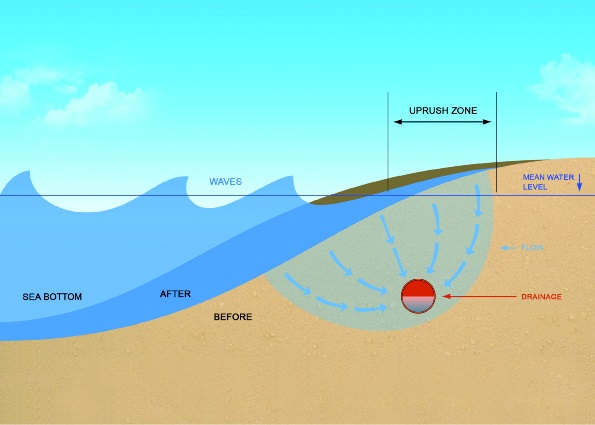Beach drainage

The beach drainage technology was discovered in 1981 in Denmark by the Danish institute GEO. Appointed to produce a large quantity of seawater for a Research Center, GEO’s engineers thought of draining the beach and use the filtering properties of the sand. The surface of the selected beach increased significantly following the installation. Thus, a second experiment was carried out on another beach to prove the beneficial effects of beach drainage on natural re-nourishment and fight against erosion.
The Ecoplage® drainage system lies on the principle of water infiltration in an unsaturated porous medium (sand). This method creates a flow of sea water from the surface of the beach towards the drain location, leading to the lowering of the water table.
This technology offers the following benefits:
- Reduced exports of sediment caused by runoff water from the water table
- Reduction of force with waves outflows
- Increase in deposits of sediments carried by the waves on the beach
- Stabilization of sediments on the surface of the beach
- Fast recovery of the beach after storms
- Increase in the wind effects helping the nourishment of the foot of the dunes and the foot of the dyke
- Build-up of a sand stock serving as a “buffer-stock” for the following storms
